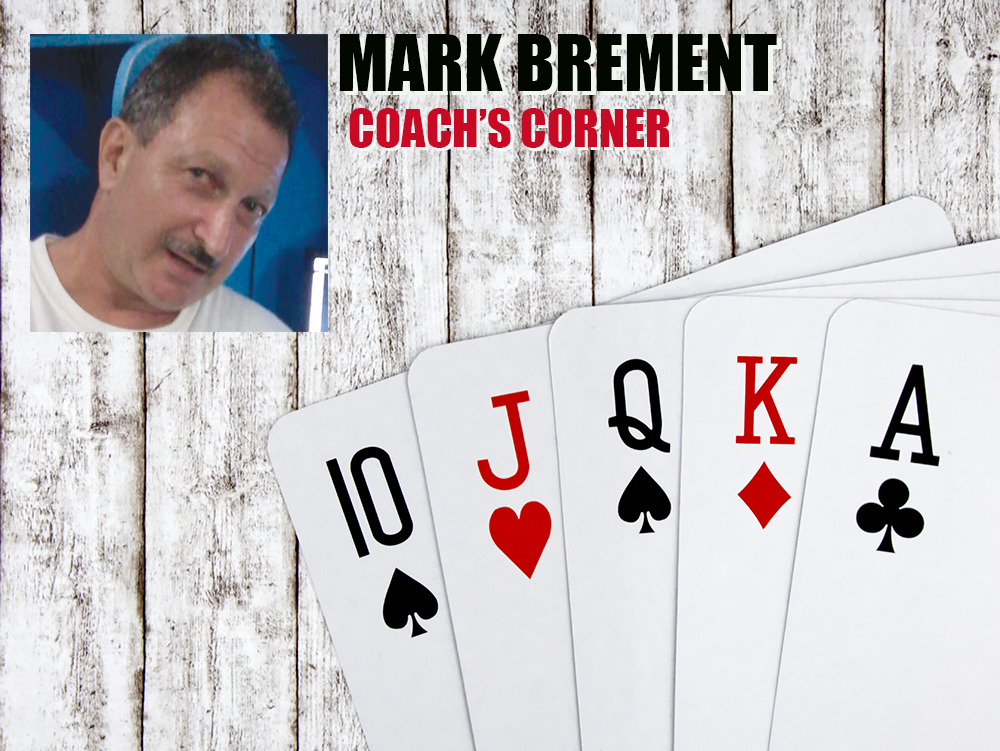This is Part 4 in a series on sit-n-go play. We’re approaching SNGs as a viable practice tool for live tournament events and we’re in a standard nine-player SNG where the top-three spots are paid.
The In The Money statistic is a strong indicator of how well my student is playing. More often than not, a tweak in one’s bubble play can be enough to catapult the player to more than a 40 percent success rate, which is strong. The bubble is when we’re down to four players. The risk-reward situation here makes it more profitable to sit tight until a player gets eliminated. Let’s look at an example: We are tied for lead with equal stacks of 5K. The two lesser stacks have 1,800 and 1,700. We’re in the big blind and post 300. The small stack shoves and we’re the only player remaining. How strong must our hand be to make the call?
First, we put the player on a wide range (maybe even any two cards).
Our choices:
• Fold.
• Call with A-A only.
• Call with A-A or K-K
• A-Ks, A-K and Q-Q or better.
• A-Q or better and 10-10 or better.
•A-J or better and any pair.
For us to call, we have to risk 1,400. The answer is A-A and K-K only.
Players who have a penchant for game theory have a keen understanding of equity charts and are the players who get the correct answer. Remember, this is not a final four at a huge event where we’re deep in the money. We must play to make the money. Even if our opponent turned over his weak holding and we could see his hand, we must have a strong edge to make the call (60-40 favorite is not enough).
Furthermore, we must discern from a multitable bubble. Here, we’re playing to make the final table of our big event. I’m not advocating super-tight play at this stage in a multitable tournament. Great players recognize the bubble is where players tend to tighten. They take advantage of this and chip up at the bubble.
So there you have it. It simply does not pay in a SNG format to play sheriff and risk your hard-earned chips. We must play to make the money. After this is accomplished, we’ll open up and focus on the art of more first-place finishes. In next month’s column, we’ll address our strategy when we’re in the money. Now it’s time to change gears again and get back to “fox mode.”
— Mark Brement has spent 15 years teaching and coaching all facets of poker, including at Pima Community College. Email him at pokermoses@phxpoker.com.




